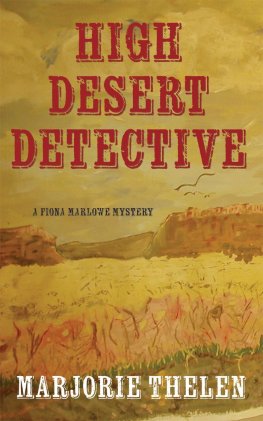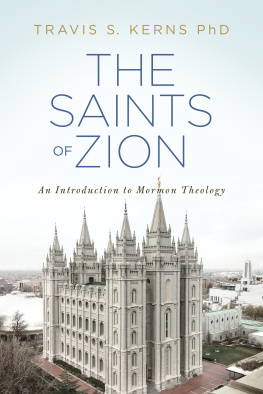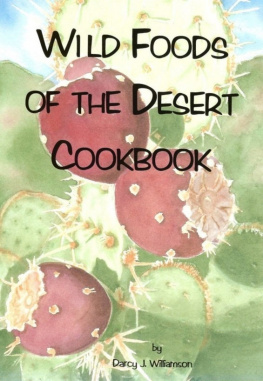2003 by the Board of Trustees
of the University of Illinois
All rights reserved
Manufactured in the United States of America
C 5 4 3 2 1

This book is printed on acid-free paper.
Library of Congress Cataloging-in-Publication Data
Kerns, Virginia, 1948
Scenes from the high desert : Julian Stewards life and theory / Virginia Kerns.
p. cm.
Includes bibliographical references and index.
ISBN 0-252-02790-6 (alk. paper)
1. Steward, Julian Haynes, 19021972. 2. AnthropologistsUnited StatesBiography. 3. ArchaeologistsUnited StatesBiography. 4. Indians of North AmericaWest (U.S.)Social life and customs.
I. Title.
GN21.S78K47 2003
301'.092dc21 2002008814
PREFACE
During the twelve years that I spent learning about Julian Stewards life and his theory, cultural ecology, I came to see that many of his ideas were rooted in memories of particular places and encounters with particular people. Only Stewards name appears on the title page of most of his books and articles, but when I read them now I see the names and faces of many other people who figured in his life and his memories in important ways. Sometimes as I read, even the rather abstract passages on resources and technology, a high desert landscape comes to mind. In a similar way, this book is very much a product of places I saw and the people I met in the course of working on itand during the years before I ever thought of writing it.
The process of learning about Julian Stewards career has shown me that American anthropologyas a profession, not only an intellectual disciplineitself merits ethnographic study. Writing this book has also deepened my sense of the fragility of life and the transience of our labors and ideas. At the same time, I have experienced again and again how people and their ideas live on in our memories as well as in words written by them and about them. Some of the people I thank below, including Jane Steward, Dorothy Nyswander, Gordon Willey, and Robert Murphy, have died since I began working on this project. Others, whom I had hoped to talk to about Julian Steward, have also died in recent years, before I had the opportunity to meet them. They include Elman Service, Robert Manners, Omer Stewart, Cora Du Bois, and Eric Wolf.
Of those I had the good fortune to meet, my first thanks are to Jane Cannon Steward. But for her generosity and candor this would be a different book, and no doubt a much shorter one. Her emotional honesty helped me from the outset to see Steward as a whole person rather than a personage. Although her untimely death cut short our collaboration, in the week we spent together it became clear that telling about her husbands life and work required giving attention not only to the obvious successes, but also to the apparent contradictions, conflicts, and struggles. These were closely connected.
Michael and Gary Steward kindly allowed me to use and quote from their parents journals from the 1930s. The two journals proved invaluable as I reconstructed several journeys in the American West and South America that Jane and Julian Steward made during the early years of their marriage. Reading their own words also greatly enriched my understanding of their life together and its relationship to Julian Stewards work during that important period.
I owe a great deal as well to the late Dorothy Bird Nyswander, Julian Stewards first wife. Because of her willingness to talk about the seven years when she knew Stewardwhich she did with frankness and without any trace of bitternessI was able to confirm many inferences I had made based solely on scattered evidence in records and other documents. She also told me a great deal about her life before and after their marriage. Curiously, her own very different career took her to many of the same places where Steward worked and traveled, and during the same era, in the late 1930s and 1940s. Her recollections clarified, in unexpected and indirect ways, some aspects of Stewards life and work in those places and those times. Dorothy Nyswanders own life, I should add, is worthy of far more attention than I have been able to give it here.
Herbert Reich, who knew Steward during their student years at Deep Springs, a private school in California, and later at Cornell University, helped me reconstruct a time and a place that were pivotal in Stewards work as an anthropologist. Trained in physics and engineering, he had detailed memories of the technical side of life at Deep Springs, including the many quirks of the ranchs irrigation system and mechanical equipment. An entire saga centered on the temperamental semidiesel engine, a Fairbanks-Moss, that for many years provided power for the ranch. He also remembered exploring Deep Springs Valley and beyond, and prospecting for silver with his friend. Even fifty years after leaving the valley, the two men mentioned some of its landmarks in letters to each other.
During my two visits to Deep Springs, and in ensuing conversations and letters, students and faculty members kindly assisted me in various ways. Brandt Kehoe and L. Jackson Newell, both former Deep Springs students who later served as president of the college, offered perspectives on the school that helped me understand its enduring influence on Steward. Although he too returned to Deep Springs, to his lasting regret he never managed to remain for more than a few days or weeks at a time.
Many of Stewards students and colleagues contributed their memories of the man and their thoughts about him as an anthropologist and theorist. I am especially grateful to Sidney W. Mintz, the late Demitri B. Shimkin, and the late Robert F. Murphy for their perceptive essays on Stewards work and for telling me about Steward as they knew him during the 1940s and later in his life. The names of others who contributed memories and impressions of Steward appear in the list of interviews. Some of them offered ideas about how Steward had or had not influenced his students and how other scholars had supported or challenged some of Stewards work. Tracing those connections, a worthy but enormous task, would require another volume, or several, and is regrettably beyond the scope of this one.
This book itself has grown far beyond what I originally planned. I imagined writing something rather brief, drawing on a limited amount of documentary material. Stewards own papers, which Jane Steward deposited in the University of Illinois archives after his death, cover the entire span of his career, but with emphasis on the later years. I eventually located correspondence and records in other collections that added balance. This material helped me verify what I learned in interviews about Stewards early life and the first years of his career and allowed me to reconstruct that period in far greater detail than I had thought possible.
The more I learned about his experiences during those formative years, the more I realized how greatly they had affected his work as a theorist. Initially, I had doubts about including some events mentioned in interviews, events that seemed very relevant, yet highly personal and perhaps difficult to document. I wondered whether cultural anthropologists efforts to protect the privacy of the people they write about should remain in force even after the deaths of those people. I was inclined to think so, although our usual technique for protecting privacythe use of pseudonymswas not an option in this case. Finding correspondence and records that supported or confirmed what I had been told, and in certain cases added more detail, clarified the issue. I saw no point in remaining silent about material that was freely available in public archives and that would come to light sooner or later. It did not seem amiss, in other words, to write about what was


 This book is printed on acid-free paper.
This book is printed on acid-free paper.




